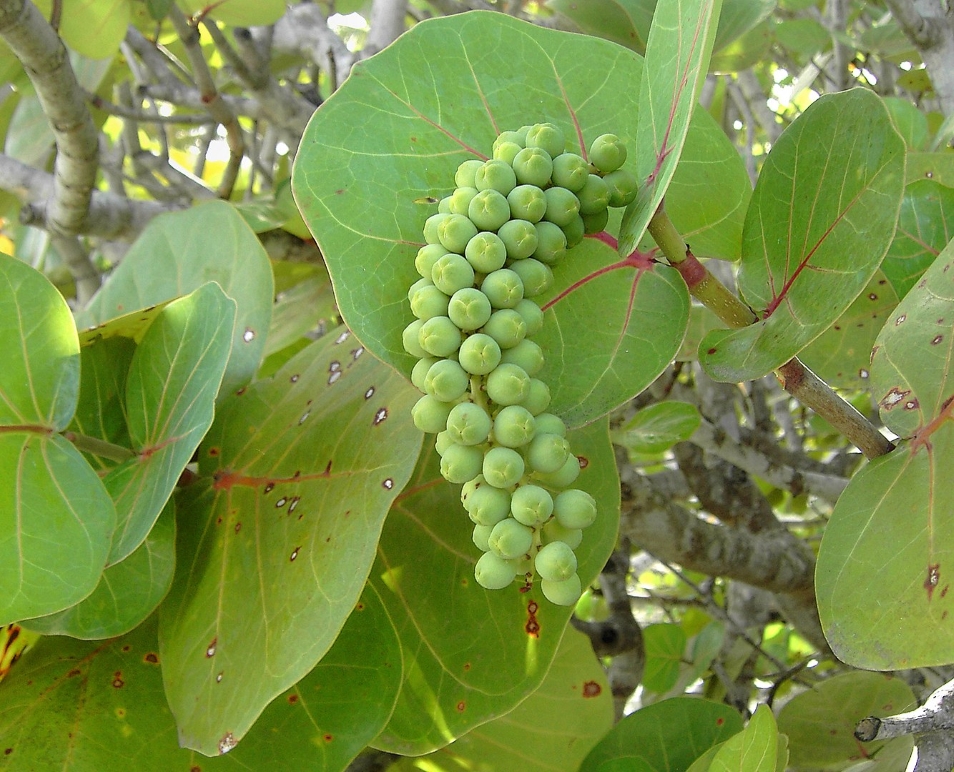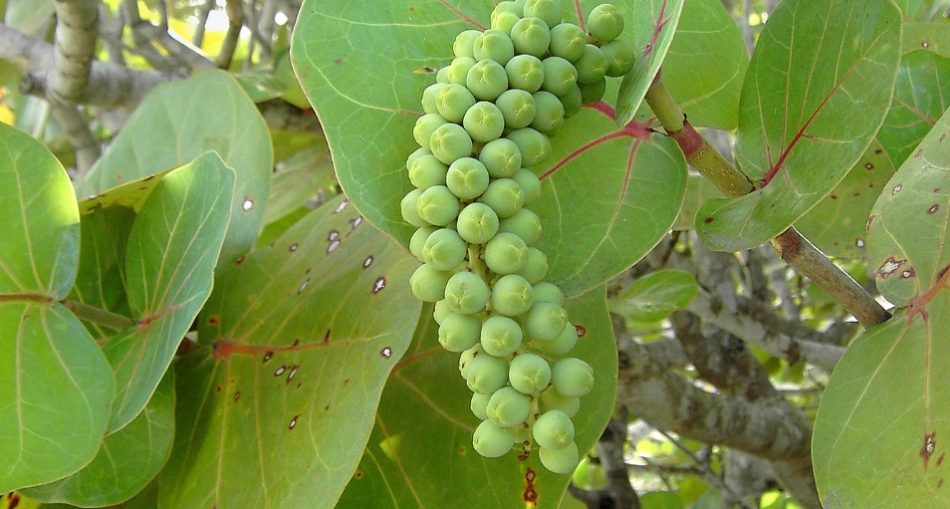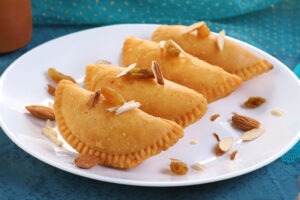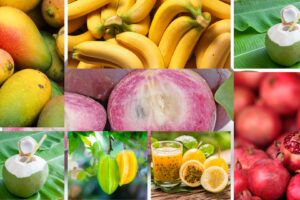Contrary to what you may think, Grapes do grow in Guyana. While they are not the ones you would find very popular during the Christmas holiday, they are still just as delicious. The Caribbean Grape is known by a large number of names including baygrape, seagrape, seaside grape/plum, pigeonwood shore grape, bow pigeon, platter leaf, horsewood and hopwood. It is also called Columbian Kino, Jamaican Kino, Caracas Kino, and Coccoloba Kino. However, the scientific name is Coccoloba uvifera. The plant provides about nine (9) magnificent health benefits, so read on to find about about them and its numerous uses.

Caribbean Grape aka Seagrape – Photo By © Hans Hillewaert, CC BY-SA 3.0, https://commons.wikimedia.org/w/index.php?curid=913260
Origin of Caribbean Grape
The fruit is native to the Greater and Lesser Antilles, the Caribbean and tropical America, in countries such as Guyana, Bermuda, the Bahamas, and Barbados. It is also known to grow in southern Florida and has been introduced to Asia in Taiwan, Australia and the Philippines.
Description of Caribbean Grape
The Caribbean Grape is an extensive evergreen tree which grows best in coastal areas, in sandy beaches and seashores. This shrub can grows as tall as twenty-six (26) feet or eight (8) metres tall. However, most of the plants do not grow more than six feet tall. The leaves of the Caribbean Grape are leathery, large and round with a size of approximate twenty-five (25) centimetres or ten (10) inches. Leaves turn red as they age and have a single primary vein, (red in colour) which extends from its base. The bark of the shrub is yellow and is smooth in texture. The berry or fruit the Caribbean Grape is about two (2) centimetres in diameter and grows in large clusters just like other species of grapes. Unripe fruits are always green but their colour changes to purple as they ripen. In the center of each grape, there is a large pit which makes up a large portion of the edible fruit.
Scientific Classification Of Caribbean Grape
- Kingdom: Plantae
- Clade: Tracheophytes
- Clade: Angiosperms
- Clade: Eudicots
- Order: Caryophyllales
- Family: Polygonaceae
- Genus: Coccoloba
- Species: C. uvifera
Edible Uses of Caribbean Grape
- The fruit of the Caribbean grape plants are delicious and may be eaten raw or made into jellies and jams.
- In addition, the grapes are made into sea grape vinegar used to cook certain dishes.
Medicinal Uses
- Jamaica kino is an astringent juice Is obtained from the Caribbean Grape plant which is used to treat diarrhoea.
- Dysentery is treated by a root decoction or that of the entire plant.
- Intestinal disorders can be treated with the decoction of the Seagrape bark.
- A tea made from the Caribbean Grape leaves was used to treat hoarseness and asthma.
- For the treatment of rashes and skin disorders, the juice and decoction can be applied externally.
Other Uses
- The Caribbean Grape is salt resistant, as a result, it is planted in the edges of beaches to prevent soil erosion.
- A dye may also be obtained from the fruit peels
- In the West Indies, the sap of the fruit is involved in the dyeing and tanning of leather.
Some countries the Caribbean grape is grown as an ornamental shrub and as a hedge.
Health Benefits of Caribbean Grape
- May Relieve Inflammation -Protein, calcium and polyunsaturated fatty acids in the omega3 group are found in the Caribbean Grape which helps to relieve inflammation and some symptoms of arthritis.
- Improves Memory and Eyesight – The unsaturated fatty acids AA, LA, DHA, EPA and ALA in the fruit helps to strengthen memory and eyesight.
- Improves Heart Health – The fatty acids also reduce cholesterol and maintains the collagen structure of the arteries. In addition, they also prevent oxidation and increase elasticity blood vessels. They also help to prevent cardiovascular diseases like stroke.
- Aids in High Blood Pressure – For people with high blood pressure seagrapes maybe use to reduce blood pressure. this is because the fruit contains Calcium potassium and vitamin D which increases the ability to maintain normal blood pressure and to promote excretion.
- May Help Control Diabetes – Consuming Seagrapes may also help to manage the sugar levels in the body of a diabetic person and may also control the activity of free radicals prevent the binding of glucose sugar dust reducing the complications or symptoms of diabetes.
- Prevents Constipation – Caribbean Grapes helps to prevent constipation because it is low in calories and sugar, allowing the food to be digested quickly by the good bacterium and the waste excreted quickly.
- May Prevent Goiter – Goiter may be prevented by consuming 30 grams of sea grapes a day which provides an adequate amount of iodine for necessary for thyroid.
- Healthy Hair and Skin – The Caribbean Grape is rich in fat which helps to protect cell membranes lower the permeability of the vessel wall improve elasticity thus reducing the symptoms of dry skin. the fruit is also rich in vitamin A and C and is capable of producing amounts of antioxidants and collagen which helps to slow down symptoms of ageing and improve the health of hair and skin.
- May prevent obesity – The fruit may be a great addition to weight loss diets since they contain a number of nutrients and antioxidants which are viewed as safe for diets. These include calcium, zinc, iron, vegetable protein, vitamin C and polyunsaturated fatty acids.
Watch This – GROWING GRAPES IN GUYANA | HGPTV (Channel16 Cable67)
About Caribbean Grape
The Caribbean Grape or Seagrape is an uncommon fruit that only grows in sandy areas. You can find them growing on beaches, coastal scrub, and coastal grasslands. This little known Caribbean berry usually has a sweet taste but some may be somewhat acidic. They are well-known to be used as windbreakers and ability to stabilize seashores.
Article References
- https://www.cabi.org/isc/datasheet/14655
- http://tropical.theferns.info/viewtropical.php?id=Coccoloba+uvifer
- https://www.healthbenefitstimes.com/sea-grape/
- https://en.wikipedia.org/wiki/Coccoloba_uvifera#:~:text=(L.)-,L.,names%20include%20seagrape%20and%20baygrape.
- https://guyanachronicle.com/2012/06/02/in-the-green-corner-55/#:~:text=The%20Sea%20Grape&text=The%20Seagrape%2C%20also%20called%20the,%2C%20Barbados%2C%20Bermuda%20and%20Guyana.
- http://tropical.theferns.info/viewtropical.php?id=Coccoloba+uvifera







